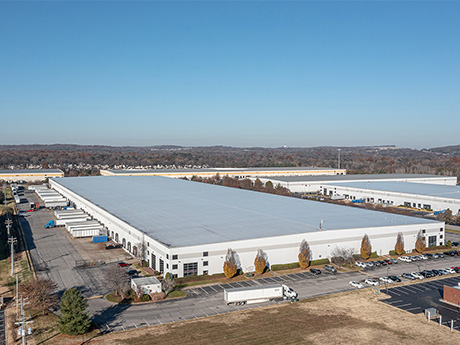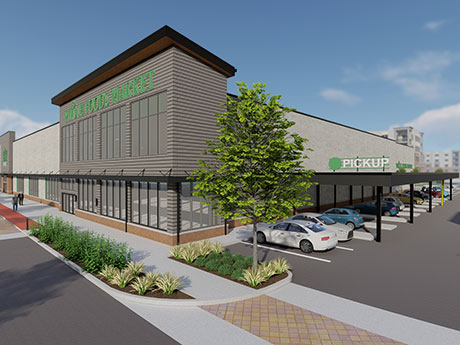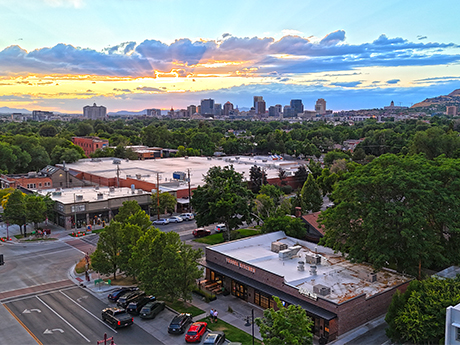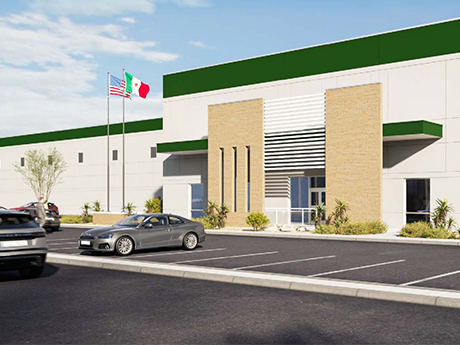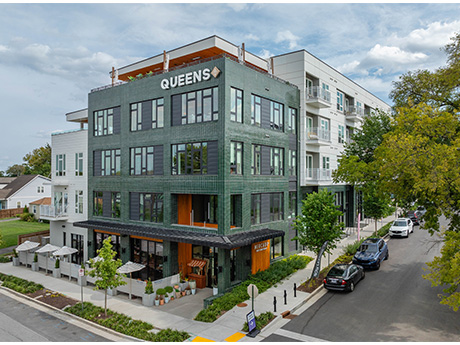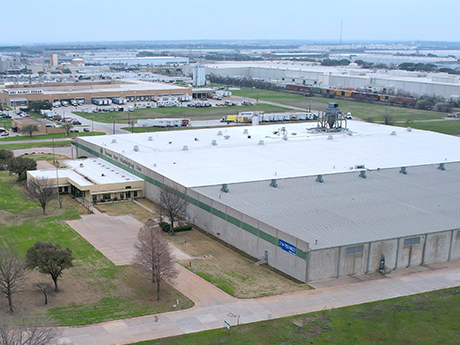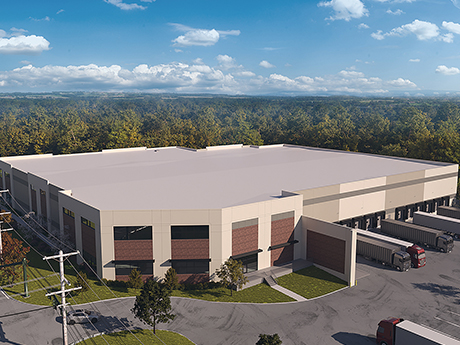Nashville’s industrial real estate market closed 2024 with a clear message: this metro is a logistics juggernaut, blending robust demand, strategic location and a dynamic investment landscape. With a vacancy rate ticking up to 4.1 percent in the fourth quarter amid new supply, yet absorption exceeding 4.2 million square feet year-to-date, the market’s resilience stands out. Rents climbed to $9.94 per square foot, and industrial sales topped $1.4 billion — a 37 percent surge year-over-year. The takeaway is unmistakable for stakeholders: Nashville’s industrial sector thrives on its ability to absorb growth while signaling new opportunities for 2025. Economic engines Macro and local economic trends underpin this strength. Nationally, e-commerce sales hit $308.9 billion in fourth-quarter 2024, a 9.4 percent increase year-over-year, according to Commercial Edge. This uptick amplifies demand for warehouse and distribution space. Locally, Nashville’s job growth moderated to 0.9 percent in 2024, according to Oxford Economics, down from 3.2 percent in 2023. But industrial sectors shone in the report: manufacturing jobs grew 2.2 percent and trade, transportation and utilities grew by nearly 0.5 percent. The Nashville Area Chamber of Commerce reported that 79 percent of 2024 business relocations and expansions involved industrial users, promising 3,309 new jobs. With …
Market Reports
The future of retail is bright for those willing to innovate, says Kathleen Brill, executive vice president and director of leasing and strategic partnerships for East Peoria, Illinois-based Cullinan Properties. “It’s no longer about square footage — it’s about activation,” emphasizes Brill. “Mixed-use, walkability and experience will continue to shape leasing trends.” Grant Mechlin, executive director of retail and multifamily brokerage services for St. Louis-based Sansone Group, says the narrative of retail leasing has shifted from survival to strategy. “Retailers are being more selective about where and how they grow, but there is no slowdown in activity,” he says. “Physical stores remain critical to brand identity, customer acquisition and fulfillment. Looking ahead, we expect to see more hybrid uses, especially where retail blends with wellness, services and entertainment.” Today’s retailers are activating their storefronts and rightsizing their footprints at a time when the cost of construction is at a record high, and many national chains have announced store closures or bankruptcies. The supply pipeline, already extremely thin by historical standards, will be further constrained by rising construction costs, helping limit fluctuations in vacancy rates, states Cushman & Wakefield in its first-quarter retail report. The brokerage firm reports a national vacancy …
— By Brian Anderson of CBRE — Utah’s retail market is shaped by its young population and large households, driving demand for big box stores and quality consumer brands. Utah has the youngest median age of any state in the U.S. by nearly four years, and the largest median household size. Our retail real estate market mirrors these realities. Large-box grocers and membership warehouses dot the landscape, creating gravity points that draw junior boxes, shops and restaurant users to these neighborhoods. Utah’s household incomes continue to rise, while the per capita income remains average. This has led to a concentration of quality — though not luxury — consumer brands in most retail centers. Despite challenges in construction and finance markets, Utah’s ongoing housing expansion is pushing box users and grocers to open new locations. The Salt Lake and Provo MSAs are expected to see several new big box and large grocery stores, mostly in outlying communities, after a quiet 2023 and 2024. Smaller-format grocers focused on organic food are also in permitting stages in established communities. These new locations will spark competition for restaurant and shop users. Health-conscious brands are expected to take space in desirable centers as 2025 progresses. …
By Enrique Volkmer, associate at Lee & Associates Laredo, Texas, has emerged as one of the largest ports in the world by volume and crossings, driven by its robust infrastructure and strategic location. According to 2023 data from the U.S. Census Bureau, the Port of Laredo was responsible for handling an aggregate amount of product valued at about $320 billion, the most in the country by that metric. In addition, a 2024 article from Transport Topics, citing data from the Laredo Economic Development Corp., stated that the Port of Laredo sees more than 5.5 million truck crossings per year. The article also noted that the port is home to 660 trucking and transportation companies, 250 freight forwarders and 120 U.S. Customs brokers. Recent analysis of freight costs conducted by LoadWise 3PL and OL Logistics found that shipping product from Laredo to several major destinations, including Detroit, Atlanta, Indianapolis and Pittsburgh, actually yields savings compared to shipping from Houston to those cities, all other factors being held equal. The same study revealed a cost advantage when shipping westward from Laredo instead of Dallas to select markets such as Los Angeles, Denver, Seattle, Salt Lake City and San Francisco. Freight is often …
Nashville’s multifamily sector has faced headwinds stemming from a wave of new deliveries over the past few years, similar to other high-growth areas across the country. Across this market, stabilized occupancy is currently 350 basis points below historical norms. Average market rents have declined nearly 3 percent from their 2022 peak, and concessions are widespread across several submarkets. However, despite these challenges, optimism is building around the Nashville’s outlook over the coming years. Investors are actively seeking well-positioned assets, anticipating what many believe will be the next strong cycle for multifamily assets in this market. Over the past three years, Nashville’s multifamily market has absorbed approximately 28,000 units, compared to roughly 30,000 new deliveries — creating a near-term supply-demand imbalance that contributed to recent softness. Nevertheless, the outlook is shifting. Only 17,000 units are expected to deliver between 2025 and 2027, while demand is expected to exceed this new supply materially, creating strong tailwinds for rent growth. In 2024 alone there were over 11,000 units of net absorption. New starts are few and far between, mostly concentrated in suburban submarkets where developers can build cost-effective, attainable housing. Elevated construction costs and higher interest rates continue to constrain development, pointing to …
Despite fresh injections of geopolitical chaos and renewed fears of tariff-induced inflation, the new year has brought an elevated sense of positivity among Texas industrial investors and the brokers who represent them. Although the sector is hardly flying as high as it was three years ago, the strong underlying fundamentals of Texas markets represent a story that has yet to see an unhappy ending. In addition, there is an understanding that with all setbacks and disruptions comes new opportunities. Between that highly specific Texas real estate dynamic and that generic fortune cookie wisdom is the framework for industrial growth on both the supply and demand sides. “We are huge believers in the Texas growth story and have conviction that the existing tailwinds will continue to propel our markets here to the forefront of the industrial investment landscape,” says Will Cronin, vice president of acquisitions at Dallas-based investment firm CanTex Capital. “The capital flows continuing to come here bear that out.” Cronin’s perspective on industrial is both nuanced and appropriate. He says that since its inception, CanTex has primarily pursued off-market deals that were available not because of outstanding market fundamentals, but due to external factors like estate planning, changing tenant …
— By Rawley Nielsen and Mark Jensen of Northmarq — The Salt Lake City apartment market has undergone significant shifts over the past few years, shaped by broader economic headwinds and local supply dynamics. Fortunately, optimism is returning to the market as interest rates stabilize, supply is absorbed and buyers see new opportunities to enter at attractive pricing. Over the past 36 months, rising interest rates have created challenges for multifamily investment, which have impacted underwriting and transaction velocity. However, recent weeks have provided a reprieve as Treasury rates have come down, bringing renewed energy to the market. Volatility remains a factor, but there is a growing sense that we are at or near the bottom, leading to increased investor interest. One of the biggest headwinds in Salt Lake City has been the supply wave, particularly in the downtown market where an influx of new multifamily deliveries has made it difficult for buyers to underwrite rent growth. Both 2022 and 2023 brought unit deliveries totaling more than 4,000 units, nearly triple the average annual delivery count from the past 10 years. We saw nearly 3,000 units delivered last year, and our team is tracking a similar amount for 2025. …
The Nashville retail market has firmly established itself as one of the strongest and most dynamic in the United States. From luxury national chains to local entrepreneurial storefronts, retailers are increasingly drawn to the city’s diverse and resilient economy — and for good reason. Over the past decade, Nashville has been one of the fastest-growing cities in the country, with consistent year-over-year population and employment gains. This trajectory has been fueled by a favorable business climate, highlighted by the absence of a state income tax, as well as local policies that encourage corporate investment and relocation. The results are tangible: global and domestic companies alike have planted deep roots in Middle Tennessee. Major players such as AllianceBernstein, Amazon, Nissan, Bridgestone, Asurion and Deloitte have relocated or expanded here, joining long-standing Nashville-based giants like HCA Healthcare and Tractor Supply Co., both of which continue to grow their local footprint. This economic expansion has powered steady demand in the retail real estate sector. In just the past year, a wave of retailers — including Whataburger, In-N-Out Burger and 7-Eleven — have entered the Nashville market, underscoring its appeal to both national and regional brands. These additions further diversify a landscape already shaped …
By Taylor Williams So much for “survive ’til ’25.” Until a couple months ago, industrial owners in the markets of New Jersey and Eastern Pennsylvania had good reason to believe that 2025 would be a year in which ground-up development got back on track. And in those markets, which are defined by their density and sticky tenant demand, new supply is rarely a bad thing. According to the latest data available from Colliers, industrial vacancy rates in Philadelphia County, Southern New Jersey and the Lehigh Valley all rose in the fourth quarter by anywhere from 80 to 150 basis points. The regionwide vacancy rate stood at roughly 7 percent at the end of 2024, up from 6 percent in the fourth quarter of 2023. The Colliers report also noted that while more than 6 million square feet of predominantly speculative product came on line in the first quarter of 2025, subsequent deliveries were forecast to decline by 40 to 50 percent in each ensuing quarter, “signaling a slowdown in supply for the remainder of the year.” Demand in the region remains healthy but has undoubtedly moderated from record levels that prevailed several years ago, according to Scott Mertz, SIOR, president …
— By Rebecca Lloyd of Cushman & Wakefield — Industrial market conditions in Salt Lake City softened a bit in 2024, with new leasing activity totaling just over 5 million square feet — a 19 percent decrease from the 6.2 million square feet recorded in 2023. Despite this decline, new sublease activity saw a 33 percent year-over-year increase, reaching 735,000 square feet. Salt Lake City’s Northwest submarket remains the dominant area, accounting for 62 percent of total leasing activity in 2024. This was followed by the Southwest at 28 percent. Collectively, they comprise 90 percent of all leasing transactions in the market. Vacancy rates ended the year at 5.9 percent, a modest 50 basis point increase from the previous year. In a positive shift, the market closed the year with 3.7 million square feet of positive net absorption, a significant increase from the 2.3 million square feet recorded in 2023. The average asking rent for all product types stood at $0.81 per square foot on a triple-net basis, up from $0.80 at the end of 2023. Industrial construction remained robust, with nearly 4.7 million square feet of new space delivered in 2024. This added to the 7 million square feet …


